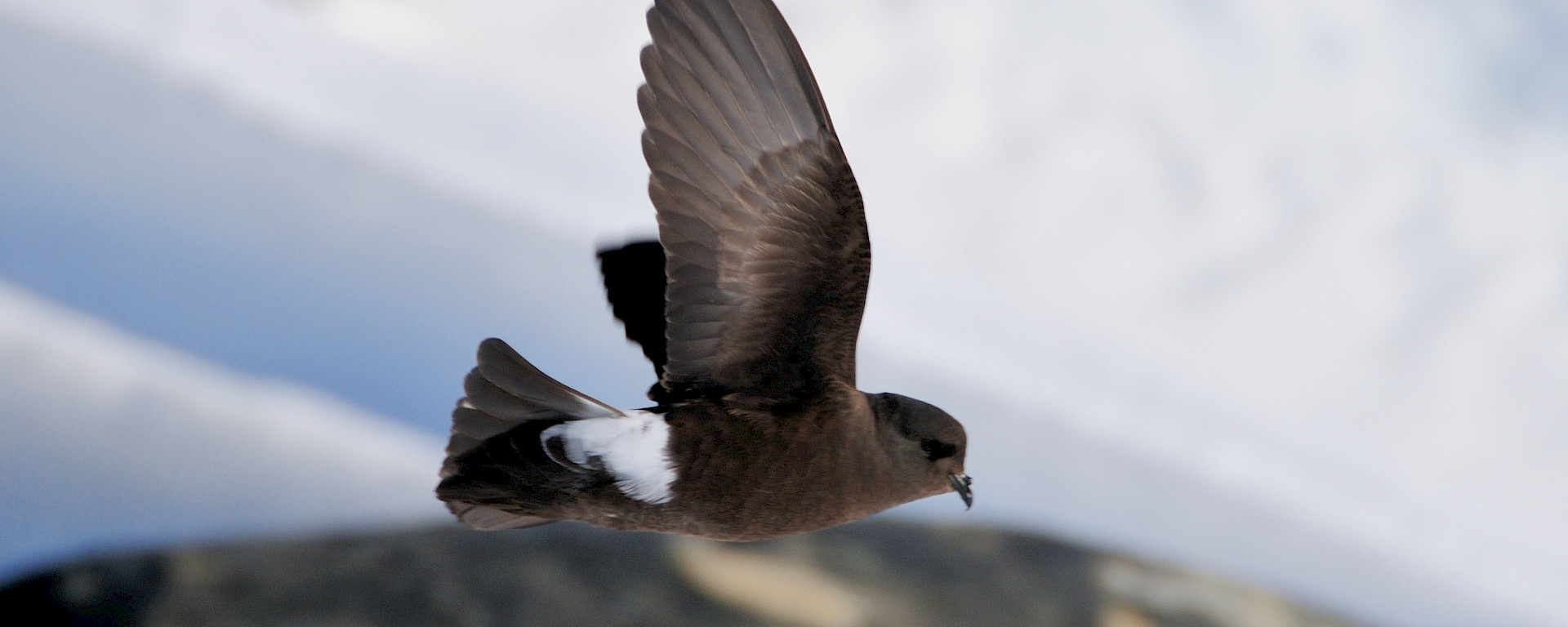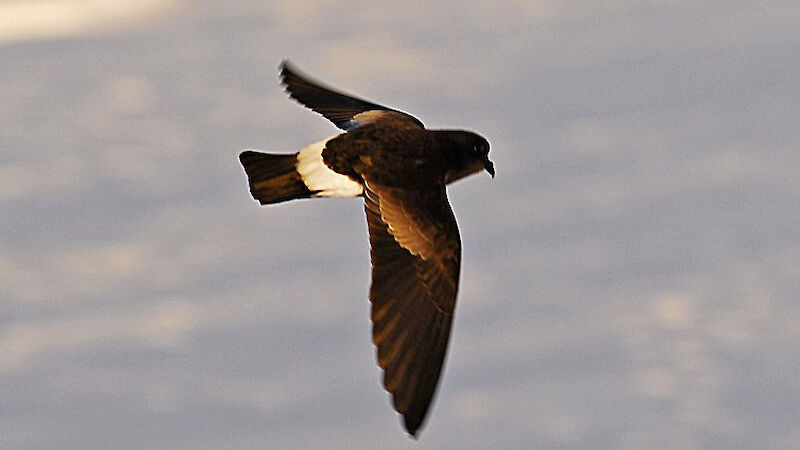Scientific name: Oceanites oceanicus
Physical description
Wilson’s storm petrel is a small storm petrel with short, rounded wings and long legs projecting beyond the tail in flight. It is about 18 cm in length with a wing span of approximately 40 cm. Their upperparts are mostly sooty-brown except for a conspicuous white rump and a pale brown band showing across the greater wing-coverts. Their underside is mainly sooty-brown.
Distribution and abundance
Wilson’s storm petrel are numerous and wide ranging. They migrate from their Antarctic breeding grounds to north of the Equator in the Atlantic, Indian and Pacific Oceans, with few birds migrating north into the eastern Pacific Ocean. Their range overlaps with many other storm petrel species.
Wilson’s storm petrel breed on the Antarctic continent, South Georgia, Kerguelen, Falklands, Tierra del Fuego islands off Cape Horn, and possibly also at Peter, Bouvet, Heard, the Balleny Islands and islands off Graham Land. Non-breeders may remain in the north throughout the year.
There are two extant subspecies, and another, O.o. maorianus is now believed to be extinct. O.o. maorianus is known only from three individuals collected on New Zealands subantarctic islands.
Wilson’s storm petrels are gregarious at sea with flocks reaching several thousands at staging points during migration.
Conservation status: least concern
Breeding
Wilson’s storm petrel return to their colonies in November/December and eggs are laid in mid-December (approximately one month later at Heard Island and Iles Kerguelen). Both parents share the 39–48 day incubation period, taking alternative shifts of about 48 hours. Once the chicks hatch they are fed irregulary by both parents for up to 52 days. Fledging and dispersion begins in April/May.
Diet and feeding
Wilson’s storm petrels feed by running along the surface of the water with wings outstretched and the bill (or their entire head) submerged in the water to scoop in their food, taking minutiae from the surface. They feed on crustacea (amphipods and Euphausia), cephalopods (squid), fish, offal, etc.
They readily follow ships and attend trawlers, attracted by the left-overs, and cetaceans (whales, dolphins etc).
At nesting sites Wilson’s storm petrel are killed by skuas and starvation, due to the blocking of the burrow by hard snow, is a cause of chick mortality.



